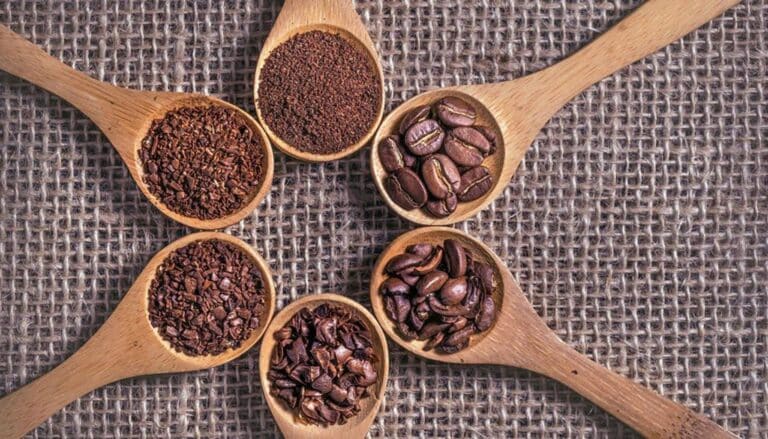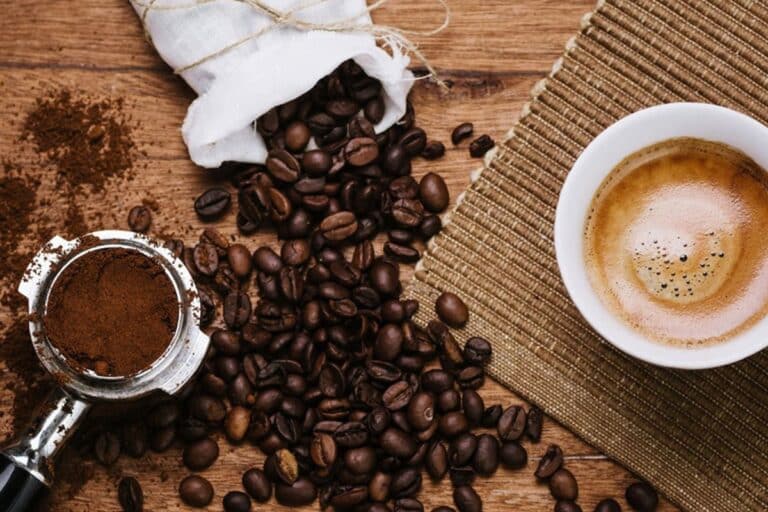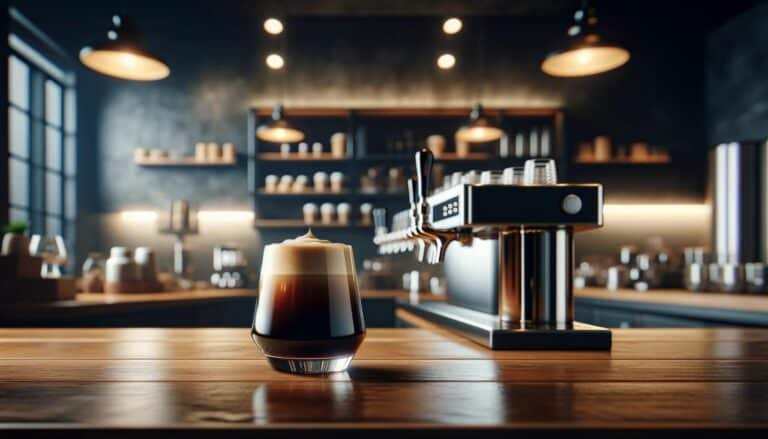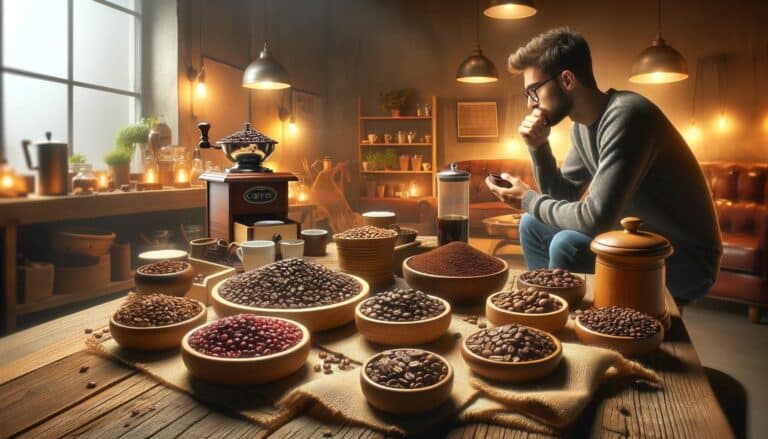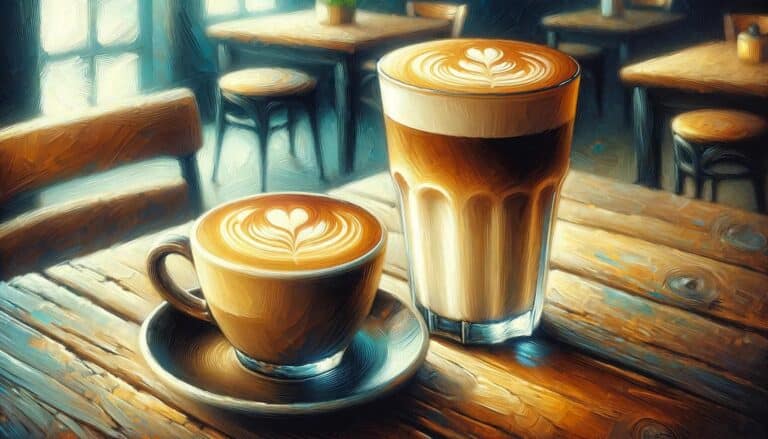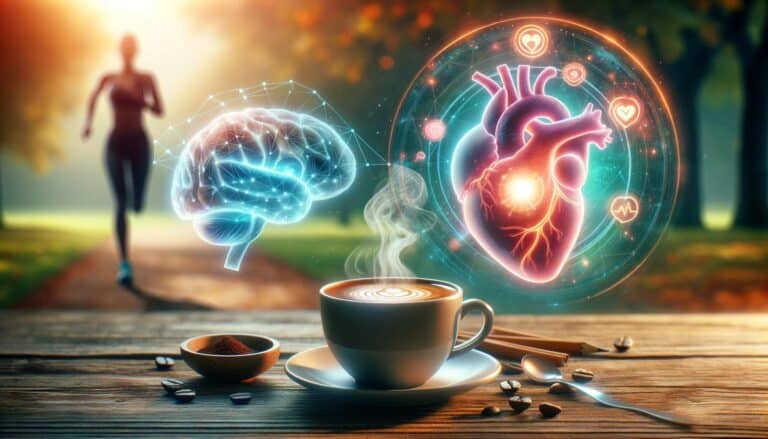Strong coffee appeals to many for a multitude of reasons. For some, it’s the bold, intense flavor that makes a statement, enveloping the taste buds with its robust richness. For others, it’s the energizing effect that a highly-caffeinated brew can offer. Whether you’re a seasoned coffee connoisseur or a beginner on the hunt for a new morning ritual, a cup of strong coffee could offer a refreshing start to your day or a powerful pick-me-up during that midday slump.
The process of making strong coffee isn’t as simple as adding extra coffee to your brew. You’ll need to understand the various elements that affect how strong your coffee is. The strength of your brew is influenced by your choice of beans, the grind size, your preferred brewing method, the coffee to water ratio, and the amount of brewing time. Each of these elements has a part to play in shaping the final taste and strength of your brew. We’re here to walk you through each step. We’ll show you how to tweak these elements to whip up a coffee as strong as you like.
Understanding Coffee Strength
The term “strong” in coffee parlance can be somewhat subjective. It generally refers to a brew that is rich in flavor, robust, and has a higher caffeine content. The strength of coffee is influenced by several factors including the type of coffee beans used, their roast level, the coffee to water ratio, the grind size, and the brewing method. A more concentrated brew often equates to stronger coffee, both in terms of taste and caffeine content.
Not all coffee beans are created equal when it comes to producing a strong cup of coffee. The two primary types of coffee beans, Arabica and Robusta, each contribute to the coffee’s strength in different ways. Arabica beans, which are more commonly used, offer a wide variety of flavors and aromas but have less caffeine than Robusta. Robusta beans, on the other hand, have a stronger, more bitter flavor and contain almost double the caffeine content. Thus making them a popular choice for those who prefer stronger coffee.
Roasting levels play a pivotal role in the strength and flavor profile of the coffee. Contrary to popular belief, dark roasts do not necessarily yield a stronger coffee in terms of caffeine content. The roasting process actually burns off some of the caffeine, meaning that lighter roasts often have slightly higher caffeine levels. However, darker roasts do have a more robust, fuller-bodied flavor, which can give the perception of a stronger cup of coffee. Therefore, if you equate strength with flavor intensity, you might prefer a dark roast, while if caffeine content determines strength for you, a light or medium roast might be your ideal choice.
Choosing the Right Coffee Beans

The first step towards a strong coffee is choosing the right beans. Opt for high-quality beans from reputable suppliers. If you’re prioritizing caffeine content, Robusta beans would be an ideal choice. If flavor richness and complexity are what you’re after, go for Arabica. Freshly roasted beans are generally better than pre-packaged ones. Local coffee roasters can often provide you with the freshest options.
The two primary types of coffee beans, Arabica and Robusta, greatly impact the strength of your coffee. Arabica beans are generally more flavorful and aromatic, providing a broad range of taste profiles, but they have less caffeine than Robusta. Robusta beans, however, are typically more bitter and less acidic, boasting almost double the caffeine content of Arabica, making them a popular choice for those looking for a caffeine-packed, strong cup of coffee.
Preserving the quality and freshness of your coffee beans is crucial in maintaining their strength. Here are some tips:
- Store your coffee beans in an airtight container. This protects them from exposure to air, moisture, heat, and light, all of which can degrade the beans’ quality.
- Keep the container in a cool, dark place. Avoid storing it in the fridge or freezer as the temperature fluctuation can lead to condensation. This can affect the flavor of the beans.
- Try to use the beans within two weeks of purchase for optimal freshness.
- Only grind the beans just before you’re ready to brew. This ensures you’re getting the freshest, strongest flavor possible.
Understanding the Role of Brewing Methods
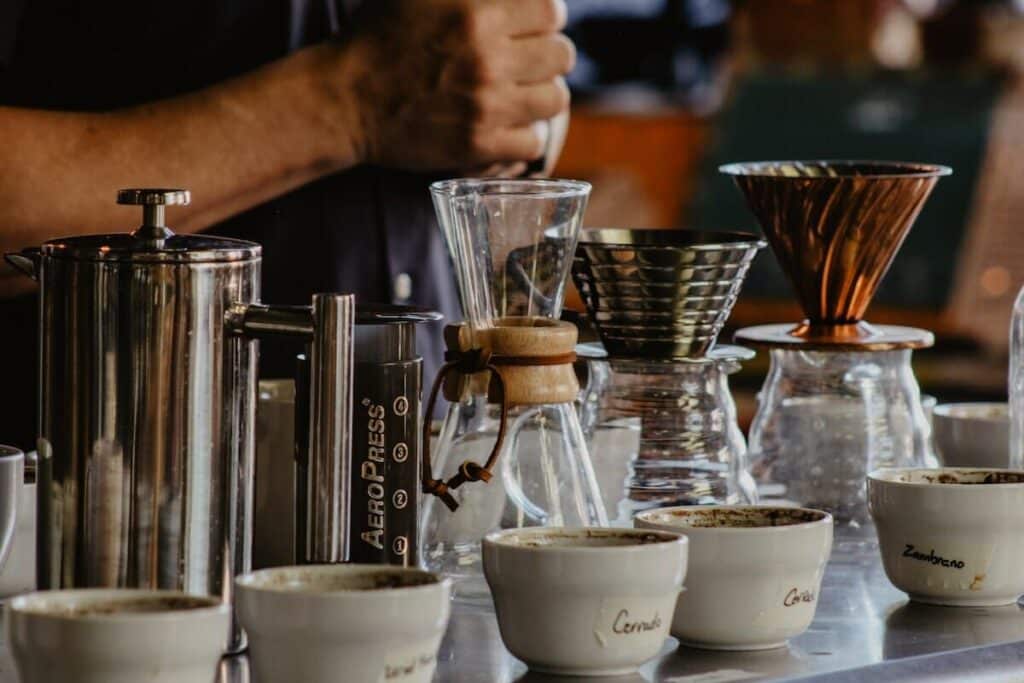
There are numerous ways to brew coffee, each providing a different taste, aroma, and strength. Some of the most common methods include drip coffee, pour-over, French press, AeroPress, and espresso machines. The brewing method you choose can greatly impact the final strength and flavor of your coffee, as each method extracts the flavors and oils from the coffee beans differently.
Three popular methods for making strong coffee are the French press, AeroPress, and espresso machine.
- French Press: This method is known for producing strong and robust coffee. It involves steeping coffee grounds in hot water within the press, and then using a plunger to separate the grounds from the coffee.
- AeroPress: This method uses pressure to extract the coffee, and it’s capable of making a very strong and concentrated brew.
- Espresso Machine: Espresso machines use pressure to force hot water through very finely ground coffee, resulting in a small, concentrated shot of coffee, which is the base for many other coffee beverages.
Step-by-Step Instructions on Each Brewing Method:
French Press:
- Add coarsely ground coffee to the French press (1 to 2 tablespoons per 6 ounces of water).
- Heat water to about 200 degrees Fahrenheit (just below boiling), then pour over the coffee grounds.
- Stir, then let it steep for 4 to 5 minutes.
- Slowly press the plunger down. Pour the coffee immediately to avoid over-extraction.
AeroPress:
- Insert a paper filter into the drain cap of the AeroPress and rinse with hot water.
- Add finely ground coffee (about 2 tablespoons per 8 ounces of water).
- Heat water to about 185 degrees Fahrenheit, then pour over the coffee grounds.
- Stir the coffee and water for about 10 seconds, then insert the plunger and press down slowly.
- The total brewing time should be about 1-2 minutes.
Espresso Machine:
- Fill the machine’s reservoir with water.
- Grind your coffee beans to a very fine consistency and add to the portafilter.
- Tamp down the grounds in the portafilter.
- Attach the portafilter to your espresso machine and start brewing.
- Depending on your machine and preference, the brewing time can vary, typically it’s about 20-30 seconds for a single shot.
The Importance of Water Quality and Temperature

Water constitutes about 98% of a cup of coffee. This makes it a crucial component in the brewing process. The quality of the water you use can significantly impact the taste of your coffee. Tap water contains minerals and additives such as chlorine, which can interfere with the coffee flavors, leading to a flat or off-tasting brew. For the best taste, use filtered or bottled water.
The water temperature during brewing significantly affects the extraction of flavors from the coffee grounds. If the water is too hot, it can over-extract and result in a bitter brew. If the water is too cool, it will under-extract and the coffee may taste weak or sour. The ideal water temperature for most brewing methods is between 195 to 205 degrees Fahrenheit (90-96 degrees Celsius).
Maintaining a consistent water temperature ensures that the coffee extracts evenly, leading to a well-balanced brew. Here are some tips:
- Use a kettle with a built-in thermometer to monitor water temperature accurately.
- Let the water sit for a minute after it reaches boiling if you’re boiling it on the stove. This will typically drop the temperature into the desired range.
- Preheating your brewing equipment (like the French press or AeroPress) can help maintain the brewing temperature throughout the process.
- Remember that the brewing process should be consistent from batch to batch. That means you should strive to keep the water temperature consistent every time you brew.
Adjusting Coffee to Water Ratio
The balance of coffee to water plays a big role in the strength of your brew. More coffee to water results in a stronger, concentrated coffee, while less gives a milder, more diluted coffee. It’s about striking the right balance. Too much coffee might lead to an excessively bitter brew, and too little might make it taste bland.
A good starting point is the “Golden Ratio” – 1 to 2 tablespoons of coffee for every 6 ounces of water. But if you’re after a stronger cup of coffee, you might want to begin with 2 tablespoons per 6 ounces. Then modify it to fit your personal preference. Remember to change the grind size accordingly – the more coffee you use, the coarser the grind should be to ensure proper extraction.
For a regular strength brew, a ratio of roughly 1:18 (coffee to water by weight) or about 1 tablespoon of coffee per 6 ounces of water is a sensible starting point.
If you’re after a stronger brew, you might want to try a ratio of 1:15 or even 1:12. This is approximately 2 tablespoons of coffee per 6 ounces of water. Adjust this to your taste.
If you’re using a method that results in a concentrated brew, like an espresso machine or AeroPress, you’ll use a significantly higher coffee to water ratio. Espresso typically uses a 1:2 ratio (for a double shot, that’s 18g of coffee to 36g of water), while the AeroPress method often calls for a 1:10 ratio.
Grinding Coffee Beans

Grinding your own coffee beans immediately before brewing ensures that you’re getting the freshest, most flavorful coffee possible. Once coffee beans are ground, they begin to oxidize and lose flavor rapidly. By grinding your own beans, you can control the freshness, the size of the grind, and ultimately, the strength and flavor of your coffee.
There are two main types of coffee grinders: burr grinders and blade grinders.
- Burr Grinders: These grinders consist of two burrs that grind the beans to a consistent size. They’re generally more expensive but are preferred by coffee aficionados as they allow for precise control over the grind size.
- Blade Grinders: These grinders function more like a blender, chopping up the beans with blades. They tend to produce an inconsistent grind but are more affordable than burr grinders.
The size of the coffee grind plays a significant role in determining the strength of your coffee. The finer the grind, the more surface area of the coffee is exposed to water. This can lead to a stronger, more bitter and robust flavor. However, if the grind is too fine, it can lead to over-extraction and an unpleasant, overly bitter taste. On the other hand, a coarse grind can result in a weaker, more acidic brew. The key is to match the grind size to your chosen brewing method and to adjust based on taste.
Brewing Time and Extraction
Brewing time is another crucial factor in determining coffee strength. The amount of time that water is in contact with the coffee grounds directly affects how much flavor is extracted. A longer brewing time results in more extraction, potentially creating a stronger coffee. However, it’s important to note that more extraction doesn’t always equate to better coffee. Over-extraction can lead to a bitter, hollow-tasting coffee. While under-extraction can result in a weak, sour taste.
If you prefer a stronger coffee, you might want to extend the brewing time slightly. However, remember to adjust this in conjunction with the grind size. For instance, you might increase the steeping time from 4 minutes to 5 minutes if you’re using a French press and want a stronger coffee. But the brewing time will be considerably less if you use an espresso machine. Generally around 20-30 seconds.
Extraction refers to the process of pulling flavor from coffee grounds using water.
- Over-extraction occurs when water is in contact with the coffee grounds for too long, or the grind is too fine. This can lead to a coffee that tastes bitter, overly strong, or even burnt.
- Under-extraction happens when not enough flavor is pulled from the coffee grounds. This can be due to a too short brewing time or too coarse a grind. Under-extracted coffee may taste weak, sour, or acidic.
The goal is to find the right balance between extraction time and grind size to create a coffee with well-rounded, full-bodied flavor. This balance will vary based on your personal preference and chosen brewing method.
Conclusion
Brewing a potent cup of coffee is all about hitting that sweet spot with several variables – picking fresh, top-notch coffee beans; getting the grind size just right; keeping the water temperature just so; tweaking the coffee-to-water ratio; choosing the right brewing method; and nailing the perfect brewing time. It’s also key to understand the idea of extraction and how it affects the strength and flavor of your coffee.
Both creativity and science go into the process of brewing coffee. This guide lays out the basic blueprint for brewing strong coffee, but remember, the perfect brew is unique to each individual and might take a bit of trial and error. Don’t be shy about adjusting these elements to match your personal flavor preferences. The coffee that you like the most is ultimately the best coffee.
Brewing a potent cup of coffee can be a truly rewarding journey. Not just for the tantalizing end result, but also for the insight and knowledge you gain along the way. Keep exploring, learning, and perfecting your coffee brewing skills.
For additional tips, think about looking into coffee brewing guides, books on coffee, coffee tasting classes, and online coffee lover communities. Remember, patience, practice, and a deep love for coffee are the key ingredients in brewing that perfect cup. Enjoy your brewing journey!
